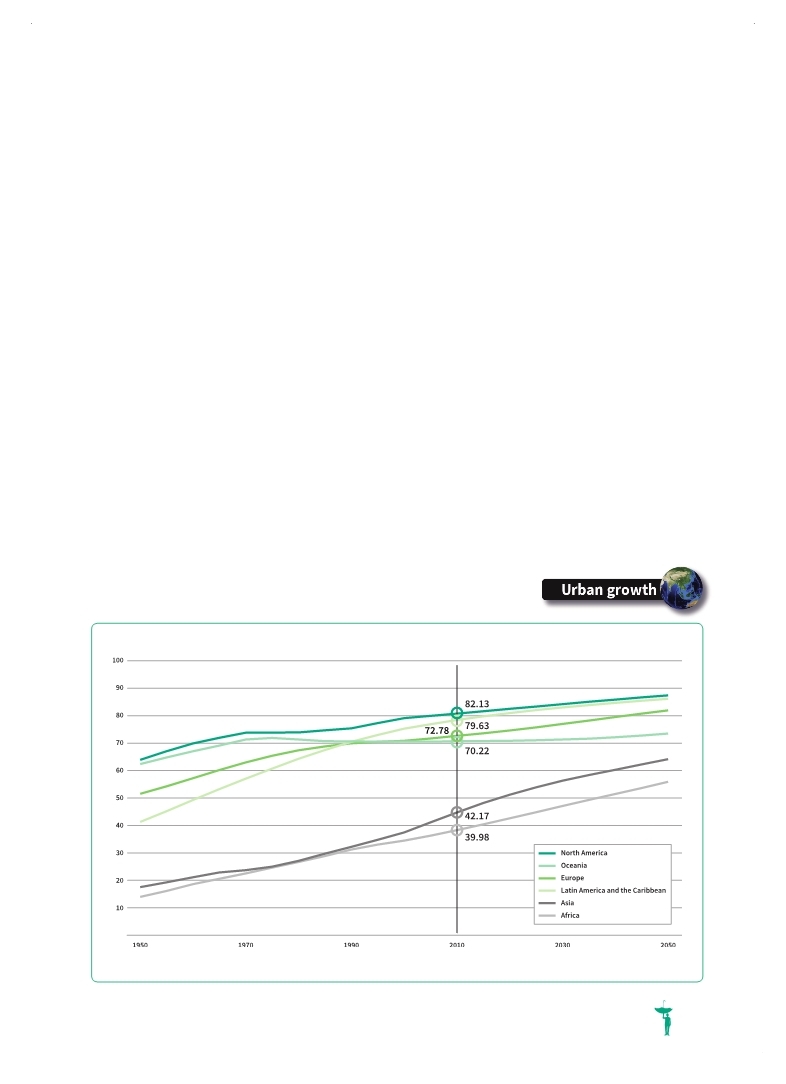 |
Global Assessment Report on Disaster Risk Reduction 2015
Making development sustainable: The future of disaster risk management |
 |
Global Assessment Report on Disaster Risk Reduction 2015
Making development sustainable: The future of disaster risk management |
|
|

225
projected growth will not take place in the megacities of Asia, but in “middleweight” cities such as Foshan in China and Surat in India (Dobbs et al., 2012
Dobbs, Richard, Jaana Reemes, James Manyika, Charles Roxburgh, Sven Smit and Fabian Schaer. 2012,Urban World: Cities and the rise of the consuming class, McKinsey Global Institute. June 2012.. . The combination of speculative urban development for a wealthy minority with informal urbanization for a low-income majority in cities with weak capacities for urban planning and management is likely to continue to drive urban disaster risk. In the coming decades, most urban growth is likely to occur in regions like South Asia and sub-Saharan Africa (Figure 11.8); without radical change, it will epitomize the growth in segregated disaster risk. Many countries in these regions have relatively weak urban governance. Governance and system failures to support regulatory functions have undermined the quality of building controls and created significant vulnerabilities. These include the insufficient quality
of underlying laws and regulations;13 ineffective administration; insufficient qualifications on the part of local building code officials, local designers and contractors; an inadequate focus on risk management; opaque, bureaucratic procedures; and corruption (GFDRR and UN-Habitat, 2014).
For example, India is projected to see its number of urban dwellers increase by 404 million over the next 35 years, which means that around 50 per cent of the country’s population will live in cities by 2050 (UNDESA, 2014b
UNDESA (United Nations Department of Economic and Social Affairs). 2014b,World Urbanization Prospects, 2014 Revision. Highlights. United Nations, New York.. . Figure 11.8 Urban growth in geographical regions
(Source: UNDESA, 2014b
UNDESA (United Nations Department of Economic and Social Affairs). 2014b,World Urbanization Prospects, 2014 Revision. Highlights. United Nations, New York.. . |
 
Page 1Page 10Page 20Page 30Page 40Page 50Page 60Page 70Page 80Page 90Page 100Page 110Page 120Page 130Page 140Page 150Page 160Page 170Page 180Page 190Page 200Page 210Page 215Page 216Page 217Page 218Page 219Page 220Page 221Page 222Page 223Page 224Page 225Page 226->Page 227Page 228Page 229Page 230Page 231Page 232Page 233Page 234Page 235Page 236Page 237Page 238Page 239Page 240Page 250Page 260Page 270Page 280Page 290Page 300Page 310
|
|
 
|
 
|
